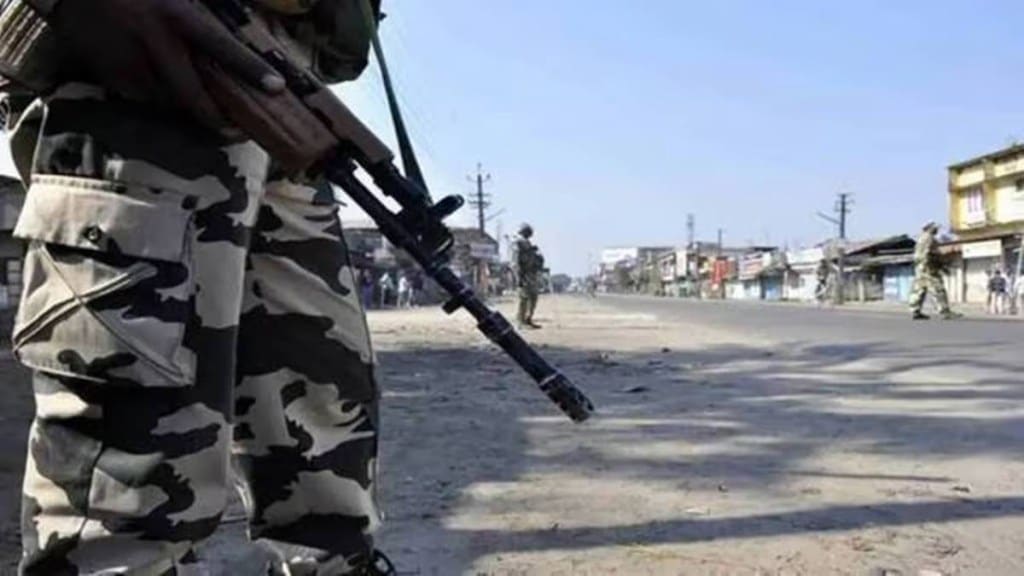The recent terror attacks in Jammu have had a significant impact, resulting in the loss of 70 lives over the past 32 months, including 52 security personnel and 18 civilians. One possible reason for this shift may be attributed to changes in the geopolitical landscape. Terrorist networks have now spread across different regions, with approximately 25 operating in the Dudu-Basantgarh area spanning Udhampur, Doda, and Kishtwar districts, and another 25 in border districts like Rajouri and Poonch.
There’s a perception among Jammu & Kashmir Police, Para Military Forces, and intelligence agencies that there’s been a notable shift towards TECHINT (technical intelligence) over traditional human intelligence (HUMINT). Recent counterinsurgency operations seem to lack sufficient ground presence, resulting in challenges gathering intelligence on terrorist movements and activities in the region. Intelligence agencies acknowledge that terrorist groups have adapted technologically, making it harder to monitor them effectively.
Central intelligence assessments indicate that around 70 percent of recent intelligence inputs in J&K have been derived from TECHINT sources such as phone call records, emails, satellite imagery, social media posts, and location data from services like Google. There’s been a significant investment of resources in TECHINT, focusing on tracking mobile locations, intercepting communications, and mapping activities. However, the role of human intelligence assets, historically crucial in counterterror operations, appears diminished in recent operations.
Technology capabilities of the Indian Army
Sources in the defence and security establishment confirmed to FinancialExpress.com “the Indian Army‘s capabilities in terms of technology and operations remain robust, with a wide array of tactical weapons and electronic warfare devices at their disposal from long time & years.”
Adding, “This includes night vision equipment, UAVs (Unmanned Aerial Vehicles), tactical communication systems, field surveillance radar, thermal imaging devices, and the deployment of Heron UAVs in strategic regions.”
“Surveillance and interception capabilities are also augmented with satellite technology and GPS-jamming capabilities. So, a kind of existing Autonomous Weapons System within the said command,” sources quoted above added.
Expert View
Sharing his views with FinancialExpress.com, Prof (Dr) Nishakant Ojha, Advisor Cyber & Aerospace Security & Eminent Expert-Counter Terrorism (West Asia & Middle East), says: “In the current context of escalating terrorism in Jammu, it is apparent that the Indian Army, State Police, and Para-Military Forces lack cooperation and coordination. Effective counter-terrorism necessitates close collaboration across political leadership, civil administration, intelligence agencies, and security forces.”
In his view, a fundamental principle in counterinsurgency and counterterrorism is that military operations should not alienate the population, as this plays into the hands of terrorists. “The support base for terrorists directly impacts the effectiveness of coercive measures, highlighting the importance of governance alongside military actions,” he opines.
However, sources quoted above state it is evident that a clear policy to combat terrorism and prevent Pakistan’s proxy war, including controlling terrorist infiltration across the Line of Control (LoC), has been lacking from both central and state authorities. Internal conflicts and motivational issues among the Army, Para-Military, and Police have been observed, undermining operational effectiveness.
“Recent terrorist attacks from Kathua to Doda have revealed that the perpetrators, all allegedly from Pakistan Army trained in guerrilla warfare, were equipped with advanced M-4 weapons and tactical devices for IEDs. In these incidents, terrorists managed to seize weapons from slain Indian soldiers, and subsequent events were documented on the illicit “Kashmir Tigers” website operated by terrorist groups,” explains Dr Ojha.
According to him there are suspicions that terrorists have established secret tunnels to facilitate infiltration from Pakistan into Jammu & Kashmir. The infiltration primarily involves foreign terrorists and elements of the Pakistan Army. “Despite significant technical and human intelligence capabilities, there appears to be a critical gap in strategic planning and coordination among stakeholders in the region. A new group of hybrid terrorists has emerged who carry out attacks and killings. These individuals are civilians without prior affiliations to terrorist organizations and often resume their normal lives after committing attacks. This phenomenon has posed significant challenges for security forces in identifying and apprehending them,” Prof (Dr) Nishakant Ojha, Eminent Expert-Counter Terrorism shares.
At the tactical level within the Indian Army in J&K, challenges include the absence of integrated operational commands in conflict zones, leading to accountability issues among agencies, turf wars, cultural differences in operating procedures between police and military, insufficient leadership within the police ranks, and incompatible communication equipment.
“Overall, the situation underscores the urgent need for a cohesive strategy and unified approach among all agencies involved in order to effectively address the ongoing security challenges in Jammu & Kashmir,” he states.
Recommendations: as an expert in counter-terrorism what do you recommend?
“In the current situation, intelligence agencies have to play a crucial role in combating terrorism by gathering valuable information through various means such as signal intelligence (SIGINT), communication intelligence (COMINT), electronic intelligence (ELINT), human intelligence (HUMINT), and other sources including surveillance. It is essential for these agencies to employ a diverse team of personnel with extensive experience,” says Dr Ojha.
Adding, “Agents and analysts should possess cultural, linguistic, and regional expertise. Unfortunately, during the Kargil conflict, this expertise was severely lacking, particularly in understanding the dialects spoken in the Northern Areas of POK, which hindered the quick interpretation of signal intercepts and the effective dissemination of intelligence.”

